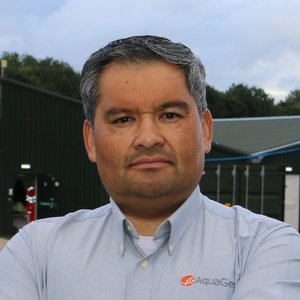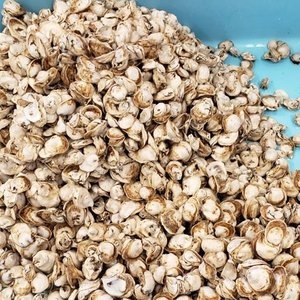Ozone is a strong oxidant commonly used for improving water quality and disinfecting pathogens in freshwater fish farms. However, when ozone reacts with certain constituents of seawater, toxic byproducts can severely impact the health of fish. As brackish water is increasingly introduced in farming post-smolt salmon, thresholds for the safe use of ozone need to be established since RAS suppliers are looking for safe, cost-efficient and reliable ways to maintain optimal water quality in brackish water RAS.
Scientists from Nofima (Norway) and The Conservation Fund Freshwater Institute (TCFFI, USA), both central in CtrlAQUA (Centre for research-based innovation), wanted to determine if ozone is safe for salmon in brackish water and what the safe limits are for post-smolts. A trial was performed to determine the ozone limit in a flow-through system. Atlantic salmon at 100 grams were reared for 12 days in brackish water of 12 ppt salinity. They were exposed to ozone levels of 250 (control), 280 (low), 350 (medium), 425 (high) and 500 (very high) mV (millivolts). They identified ozone levels up to 350mV as potentially safe and 300 mV as safe for the health of post-smolts in flow-through brackish water.
In a follow-up study by Nofima that is not yet published, the identified threshold was confirmed for RAS. Carlo Lazado, fish health researcher in Nofima, will present the results at the digital conference “Smolt production in the future” on October 21, 2020.
Chris Good, scientist at TCFFI, reports that even lower ozone dosages are sufficient to improve water quality. “This would depend on the quality of water being treated but in our experience in replicated freshwater RAS, a lower ozone level of 290 mV still resulted in significant improvements to water quality in general, including reduced biochemical oxygen demand and increased UV transmittance.”
Observed effects of too much ozone
There was high mortality after a few days in the two highest groups, and the highest group was terminated for this reason. For the group exposed to 350 mV, the scientists observed changes in the gills, but these were within the range of acceptable response. The mortality for this group was one percent and there was no mortality for the two lowest groups.
The scientists also tracked indicators of fish welfare, such as genes important for antioxidant defense and quality of skin and gills. “What surprised us was that ozone is much more aggressive on the gills compared to the skin. It means that gills are a good indicator tissue to check out the sensitivity to ozone”, said Lazado.
The recommendation of being below 350 mV for 100-gram post-smolt salmon in brackish water is consistent with ozone thresholds for other farmed fish species, and salmon post-smolt in freshwater. “When relying on this limit it requires that measurements of ozone in the production facility are accurate and reliable”, said Kevin Stiller, RAS-researcher in Nofima.
Check out the article “The Effects of Ozone on Atlantic Salmon Post-Smolt in Brackish Water – Establishing Welfare Indicators and Thresholds.”













